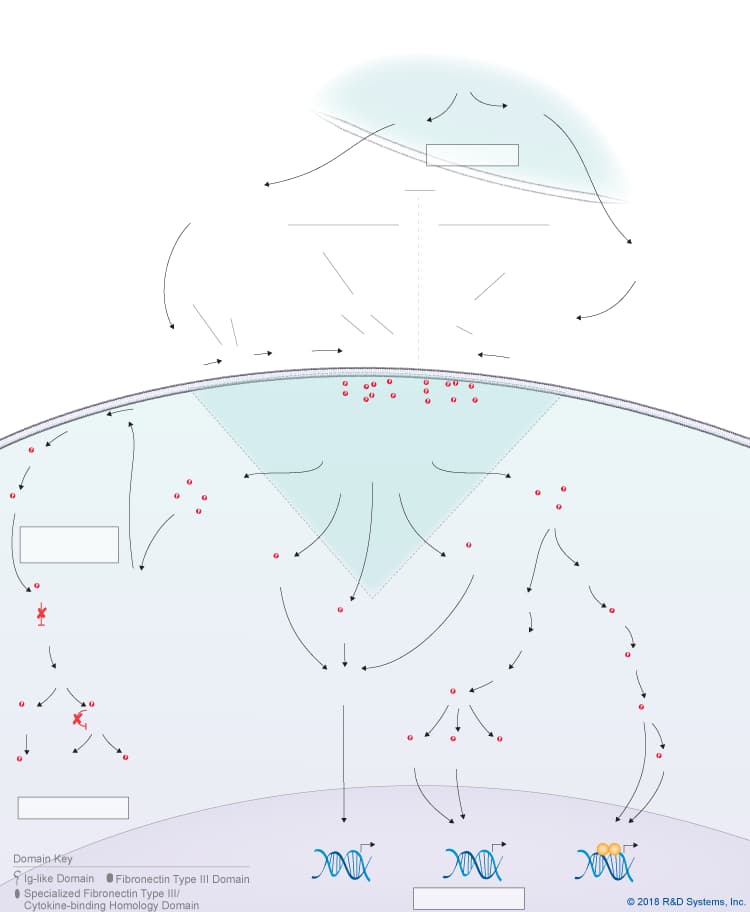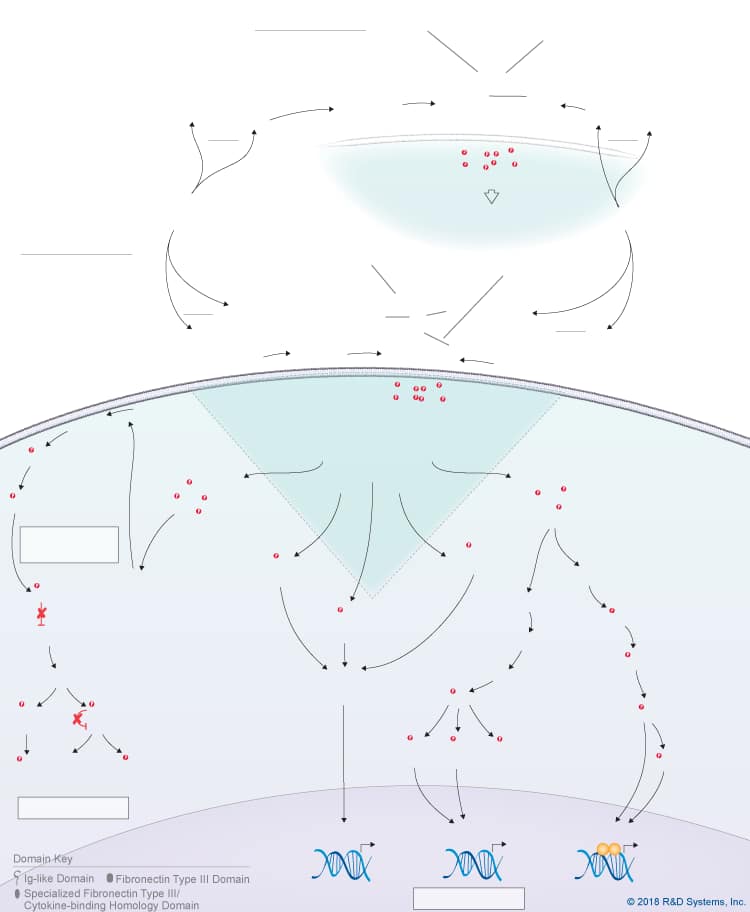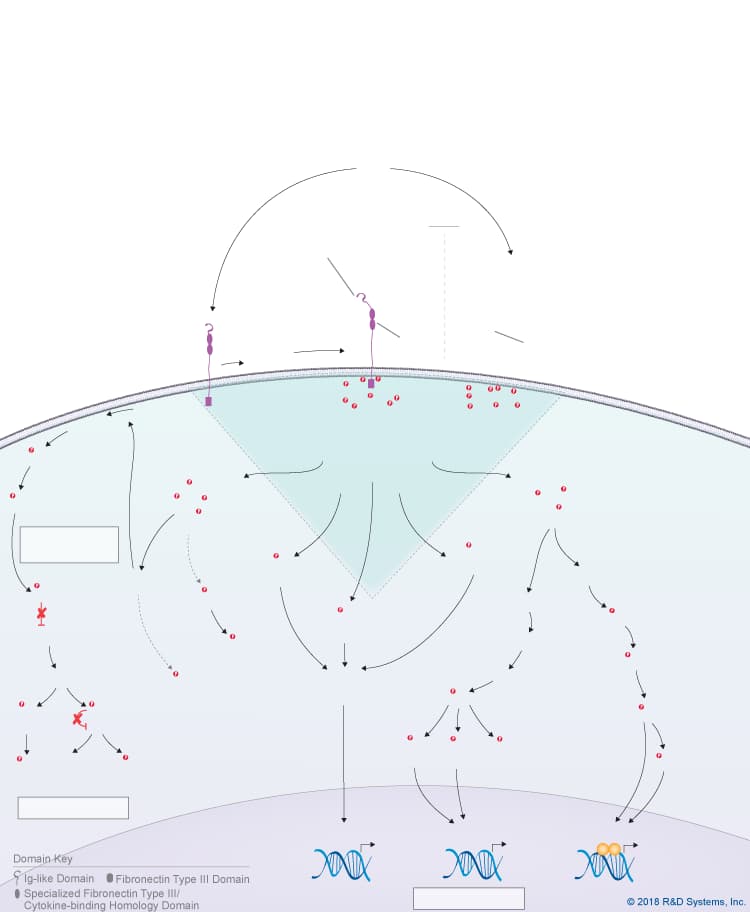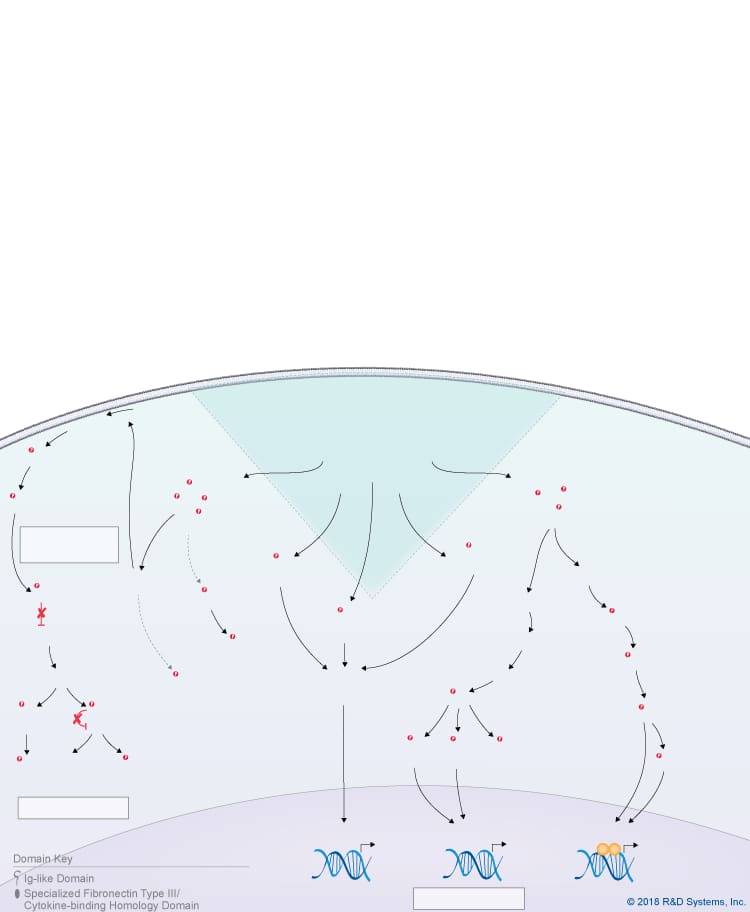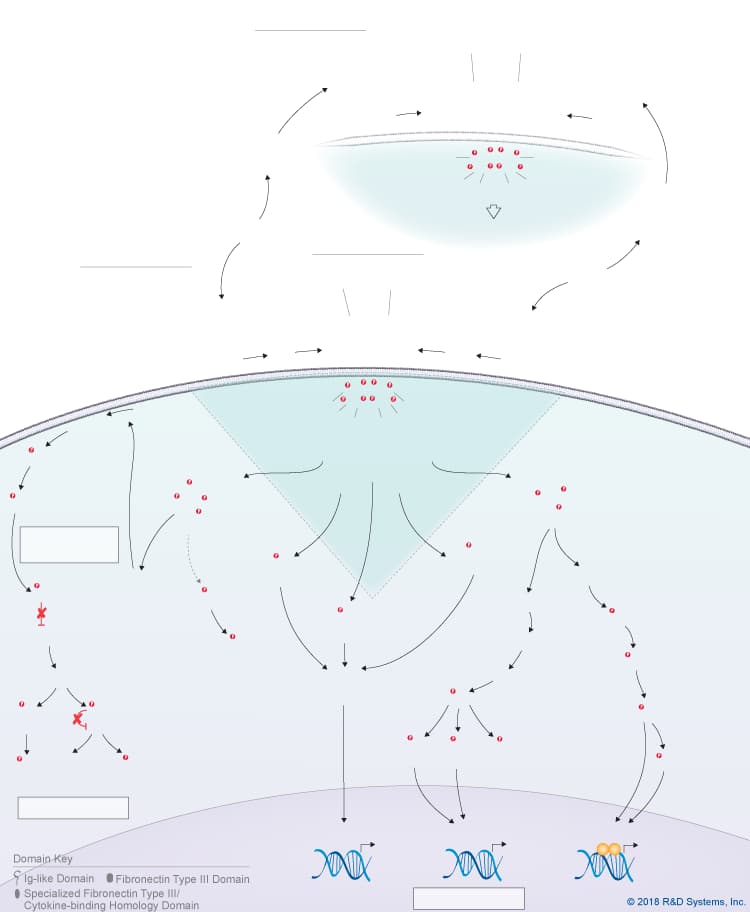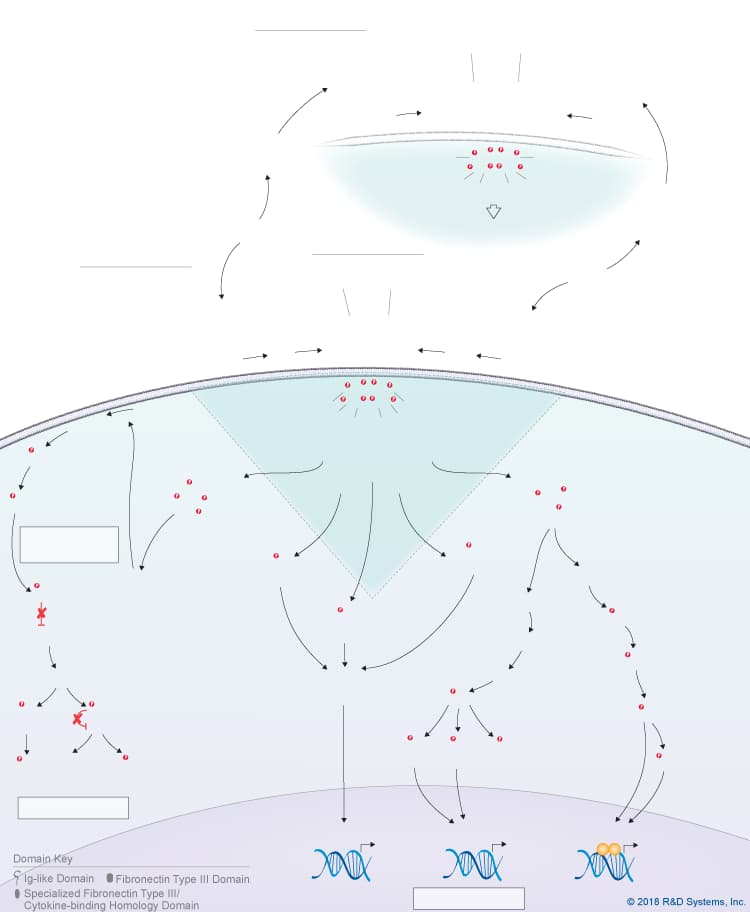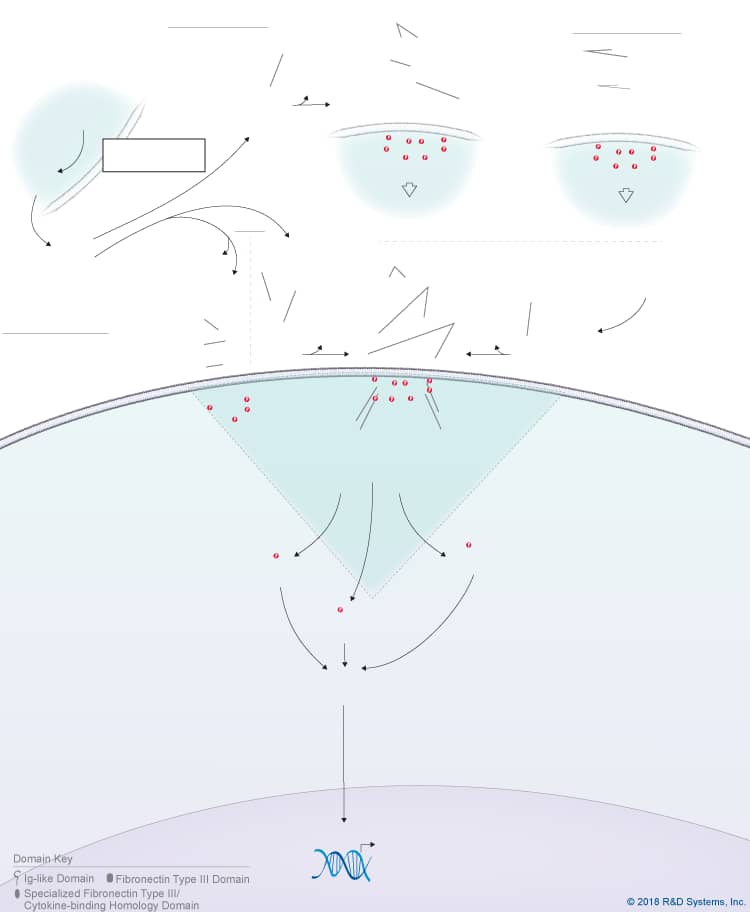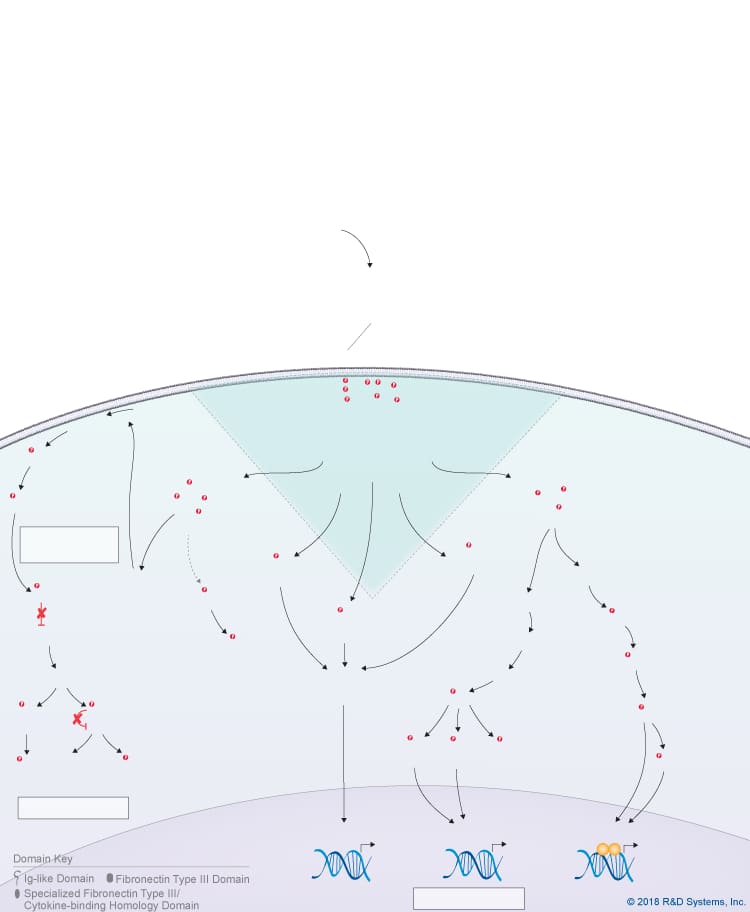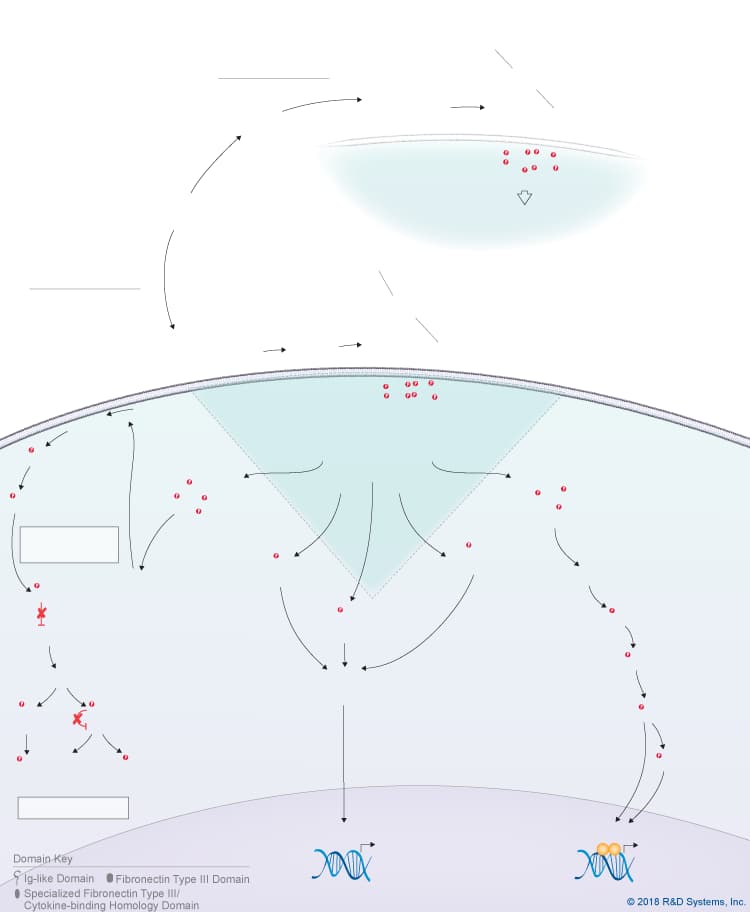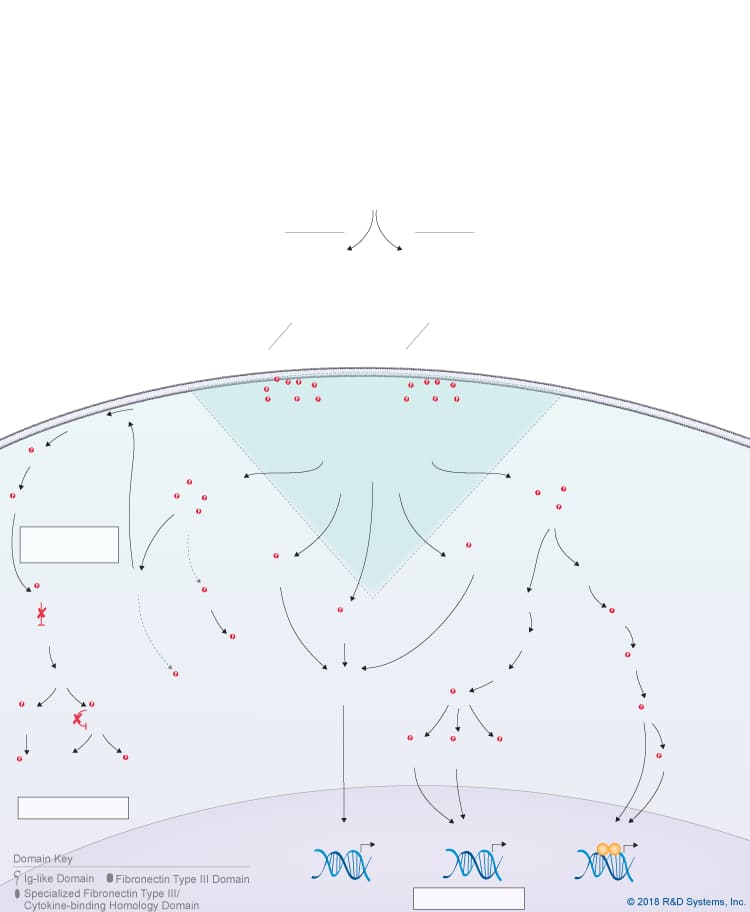IL-11 Signaling Pathways
Click on the other IL-6 family cytokines shown in the Explore Pathways box below to see the signaling pathways that are activated by each cytokine. Refer to the table below each pathway to see a select list of cytokine-expressing cells or tissues and the primary biological effects induced by the different members of the IL-6 cytokine family.
alpha
alpha
alpha
alpha
alpha
alpha
alpha
alpha
Use our Product Suggestion form to enter a request.
You will be notified once it becomes available.
Use our Product Suggestion form to enter a request.
You will be notified once it becomes available.
Use our Product Suggestion form to enter a request.
You will be notified once it becomes available.
Use our Product Suggestion form to enter a request.
You will be notified once it becomes available.
Cell Proliferation
Cell Proliferation
(Inactive)
(Inactive)
Use our Product Suggestion form to enter a request.
You will be notified once it becomes available.
Use our Product Suggestion form to enter a request.
You will be notified once it becomes available.
Use our Product Suggestion form to enter a request.
You will be notified once it becomes available.
Use our Product Suggestion form to enter a request.
You will be notified once it becomes available.
(Unknown)
(Unknown)

Overview of IL-11 Signaling Pathways
IL-11 is a member of the IL-6 cytokine family, which also includes IL-6, IL-27 p28/IL-30, IL-31, Leukemia inhibitory factor (LIF), Oncostatin M (OSM), Cardiotrophin-like cytokine (CLC), Ciliary neurotrophic factor (CNTF), Cardiotrophin-1 (CT-1), and Neuropoietin. Like most other members of the IL-6 cytokine family, IL-11 is a four-helix bundle cytokine that signals through a receptor complex containing the gp130 receptor subunit. Similar to both IL-6 and CNTF, IL-11 can promote both classic and trans-signaling pathways. Classic IL-11 signaling is initiated in cells expressing the membrane-bound form of the IL-11 receptor alpha subunit (IL-11 R alpha) and gp130. IL-11 initially binds with low affinity to membrane-bound IL-11 R alpha, which then recruits the signal-transducing gp130 receptor subunit to form a high affinity receptor complex. Association of gp130 with the IL-11-IL-11 R alpha complex stimulates gp130 dimerization and formation of a 2:2:2 heterohexameric complex. Additionally, IL-11 can initiate trans-signaling in gp130-expressing cells that lack expression of IL-11 R alpha. IL-11 trans-signaling requires binding of IL-11 to a soluble form of IL-11 R alpha, which can be generated by proteolytic cleavage. This IL-11/soluble IL-11 R alpha complex can then trans-activate IL-11 signaling pathways in gp130-expressing cells, thereby expanding the range of cells that are affected by IL-11. Formation of either the IL-11 classic or trans-signaling ligand-receptor complexes leads to the activation of several intracellular signaling pathways including the Jak-STAT pathway, the Ras-MAPK pathway, the PI 3-K-Akt pathway, and the p38 and JNK MAPK pathways, which mediate various biological effects in different cell types.
IL-11 was originally discovered in the supernatant of a stromal cell line as a factor that could stimulate the IL-6-dependent proliferation of plasmacytoma cells. It was subsequently shown to be produced by multiple different cell types and to have a wide range of activities. These include the ability to stimulate thrombopoiesis and erythropoiesis, promote the production, differentiation, and maturation of megakaryocytes, and act synergistically with other hematopoietic growth factors. IL-11 has also been shown to have immunomodulatory functions such as the ability to regulate macrophage differentiation and function, induce Th2 and/or Th17 polarization of CD4+ T cells, stimulate B cell IgG production, and protect endothelial cells from inflammation-associated injuries. Additionally, it can regulate neurogenesis, increase osteoclast development, inhibit adipogenesis, and regulate epithelial cell proliferation and apoptosis.
To learn more, please visit our IL-6 Family Research Area page.
IL-11
| Primary IL-11-Expressing Cells | Primary Biological Effects of IL-11 |
| Bone marrow stromal cells | Promotes the production, differentiation, and maturation of megakaryocytes |
| Chondrocytes | Stimulates thrombopoiesis and erythropoiesis |
| Epithelial cells | Modulates the growth of gastrointestinal epithelial cells; Confers mucosal protection in the intestine |
| Eosinophils | Increases osteoclast development and bone resorption |
| Fibroblasts | Regulates neurogenesis; May act as a differentiation factor for neural progenitors |
| Hepatocytes | Inhibits adipogenesis |
| Intestinal myofibroblasts | Regulates macrophage differentiation and function |
| Keratinocytes | Induces Th2 or Th17 polarization of CD4+ T cells |
| Macrophages | Promotes B cell IgG production |
| Neurons | Generally considered to be an anti-inflammatory cytokine |
| Osteoblasts | Protects endothelial cells from immune-mediated injuries |
| Smooth muscle cells | Stimulates production of several acute phase proteins in hepatocytes |
| Synoviocytes | Regulates epithelial cell proliferation and apoptosis |
| T cells | |
| Trophoblasts |
Get Print Copy of this Pathway
